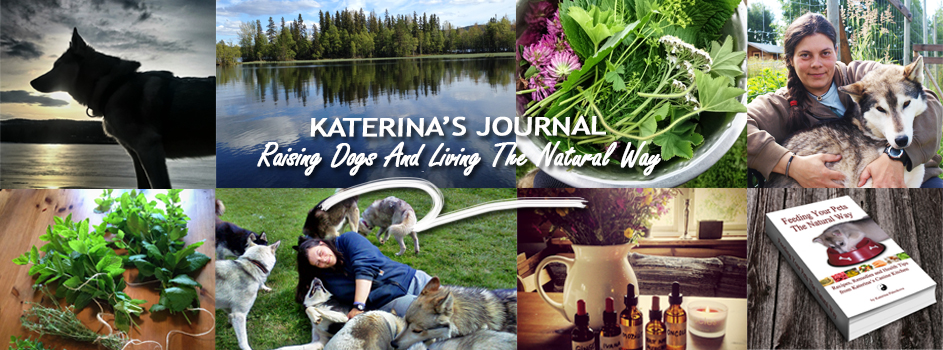Have you ever experienced your dogs having a dull coat? Perhaps even some bold spots, although she or he isn´t scratching or licking on it? Dry, discolored, even split hairs? Rusty coloring on your otherwise black dog?
If your answer to any of these questions is yes, then your dog might be very likely suffering from not enough Omega 3 unsaturated fatty acids in her or his diet.
But don´t worry and read on, you might save a consultation with a specialist or spend horrendous amounts of money at the vet.
In my life as a naturopath and holistic dog nutrition consultant I have heard so many times of people taking their dog to the vet and coming back with the diagnosis "he is allergic to fleas", without even doing a proper test, and the dog´s owner knowing there are no fleas anywhere to be found around their home and places where the dog runs.
I find this unprofessional to say the least.
But let´s rather focus on how to fix the problem at hand :)
First of all, take a moment to evaluate your dog´s diet. Does it contain fish or good quality fish oil? What sources of meat are you feeding on regular/daily basis?
 |
| Pacific wild salmon is one of the best sources of Omega 3 fatty acids |
Vast majority of meats contain plenty of Omega 6 and so do many commercial processed pet foods, so if this is your exclusive source of nutrition for your dog, perhaps with the addition of some fillers such as pasta or rice, there is a very high probability of a huge imbalance between the fatty acids (fats) in your dog´s diet and she or he may be suffering from a deficit of Omega 3.
Deficiency of this very important nutrient is often visible on the quality and condition of the dog´s coat. But it can also be accompanied with a lot more severe symptoms such as chronic inflammation, worsened arthritis, nervousness and behavioral changes, even eye problems.
 |
Large packaging at horse and farm
suppliers are an economic way
how to source flax seed for a
multiple dog kennel.
|
But do not panic, the problem may be solved rather quickly.
By adjusting, enriching and balancing your dog´s diet with addition of natural sources of Omega 3 fatty acids, it can take as short as three to four weeks for your dog to bounce back.
We have experienced such a situation once in our large husky pack, in all the years since working and living with this breed.
Not enough sources of fish over an extended period of time and mistake on our side by forgetting to supplement this important fat caused about a half of our dogs coats to turn rough, dull and dry. Two of our black and white dogs turned quite "rusty" and we noticed even a slight depression in a few others. It didn´t take long for us to get the pieces together and we immediately adjusted their diet. Within 3 weeks their coats began to soften and shine again. It took another week for the mood to improve on those impaired and when the first of the two black dogs began to shed her winter coat, we noticed the new coat, growing underneath was already healthy colored and overall healthy looking again.
So what can you do to add more Omega 3 fatty acids to your dog´s food:
I have an excellent experience with switching between GOOD QUALITY of cold water fish oil and organically grown flax seed oil.

Krill (shrimp) oil is also known as an excellent source of Omega 3 unsaturated fatty acids.
Additionally, we also infuse flax seed in hot water and let it soak over night, or grind it up into powder and alter between this and the oil, especially on warmer days.
If you choose to opt for the ground flax seed, make sure to grind only a few weeks worth (3-4 max) and keep it in a tightly closed glass jar in a fridge. Seeds, once their structure had been broken up, tend to oxidize when exposed to air and higher temperature, and a rancid food source is a dangerous one for your dog´s health!
Similar rule applies for the oils - once opened, store refrigerated and use within 3 weeks after opening. This is probably the only case where economic (and thus also environmentally friendly) packaging is not advised!
But of course, the best source is the natural source in its natural form - cold water fish, phytoplakton and also brains or eyes That is why I highly recommend feeding salmon heads and my dogs just love them!
I can see the faces some of you might be making right now, while reading this, thinking "but my dog hates fish".
If this is the case, you can always opt for the supplementation with oils or flax seeds OR you can try to give your dog at least a small amount twice a week. Sardines in brine are an excellent example and many dog owners are pleasantly surprised after my recommendation to try it, that their dog actually enjoys it.
This is also a good way to build up your dog´s taste for fish :)
Other cold water fish to feed besides sardines are anchovies, herring, mackerel and wild pacific salmon.
Overall, you don´t need to start feeding fish all too often, 2-3 times a week before your dog´s condition improves, then once or twice a week, with a variation of ground or infused flax seed and or flax seed oil.
Keep in mind that diet rich in variation of natural sources of nutrients is a healthy and balanced diet and that fresh meat (of various sources) based diet is a species appropriate diet, as nature intended for your carnivorous companion! :)





No comments:
Post a Comment